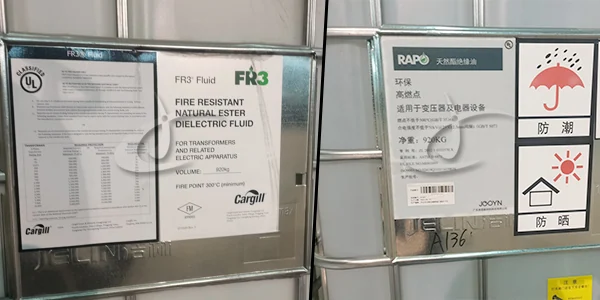Made Use Of Transformer Oil Improvement: Lowering Waste and Enhancing Oil Energy
Made Use Of Transformer Oil Improvement: Lowering Waste and Enhancing Oil Energy
Blog Article
Understanding Dielectric Transformer Oil: Essential Benefits and Utilizes
Dielectric transformer oil offers as an essential element in the operation of electric transformers and high-voltage equipment, functioning mainly as a protecting medium. As we check out the several benefits and uses of dielectric transformer oil, one need to think about exactly how its function influences not just devices reliability, yet likewise more comprehensive functional factors to consider.
What Is Dielectric Transformer Oil?
Dielectric transformer oil is a specific protecting fluid made use of in electrical transformers and other high-voltage electric devices. Unlike traditional oils, dielectric oil is specifically formulated to have high dielectric stamina, which enables it to hold up against considerable electrical stress and anxiety without performing electrical power.
Generally stemmed from mineral oil or synthetic sources, dielectric transformer oil fulfills rigid industry criteria for purity and efficiency. Its chemical composition is meticulously developed to minimize the danger of oxidation and degradation with time, which is important for keeping the oil's protecting properties.
In addition to its protecting features, dielectric transformer oil serves as a coolant, moving and taking in warmth created by electrical elements throughout procedure. This twin functionality is crucial for boosting the overall performance and life-span of transformers. Additionally, dielectric oils go through strenuous screening to ensure compatibility with various materials and to avoid damaging reactions that could jeopardize system stability. Overall, dielectric transformer oil is a vital element in the trustworthy and safe procedure of electric framework.

Key Advantages of Dielectric Oil
While dielectric transformer oil offers crucial features in electric systems, its advantages extend beyond plain insulation and cooling. Among the key advantages of dielectric oil is its high dielectric stamina, which successfully prevents electrical failure, guaranteeing the secure procedure of transformers and other high-voltage devices. This building is essential in keeping the reliability and longevity of electrical systems.
Furthermore, dielectric oil has exceptional thermal conductivity, permitting for reliable warmth dissipation. This attribute reduces the danger of overheating, therefore prolonging the life expectancy of transformers and minimizing upkeep expenses. The oil's chemical stability and resistance to oxidation add to its longevity, guaranteeing consistent efficiency over time.
One more substantial advantage is its capacity to reduce arcing and corona discharge, which can damage electrical components. By providing a secure medium for electrical power transfer, dielectric oil boosts operational safety.

Applications of Dielectric Transformer Oil
Dielectric transformer like it oil plays a critical function in numerous applications within the electric sector, primarily due to its one-of-a-kind insulating and cooling residential properties. Among its main usages is in power transformers, where it offers to shield inner components and help with warm dissipation. This is vital in keeping functional performance and long life.
Along with power transformers, dielectric oil is additionally made use of in circulation transformers, guaranteeing reputable and risk-free power circulation. Its high dielectric stamina avoids electrical discharges, thereby reducing the risk of failings and boosting system integrity. In addition, dielectric transformer oil is used in activators and capacitor banks, where it performs comparable features, shielding delicate equipment from electric malfunction - used other transformer oil.

Upkeep Factors To Consider
Proper upkeep of dielectric transformer oil is important to make certain optimum performance and long life of electric devices. Normal tracking of the oil's chemical and physical buildings is critical to discover any destruction that might hinder the insulation and cooling capacities. Secret parameters to examine include dampness web content, level of acidity, and dielectric toughness.
Periodic sampling and laboratory analysis can recognize the presence of impurities top article such as dissolved gases, particulates, and oxidation byproducts. These analyses help in establishing the oil's condition and whether it requires therapy or substitute. Filtration systems can be employed to get rid of particulates and dampness from the oil, recovering its shielding residential or commercial properties and expanding its life expectancy.
Additionally, preserving correct operating temperature levels is crucial; excessive warm can speed up oil degradation (waste transformer oil). Applying temperature level monitoring systems can help in identifying overheating problems early
Ecological Impact and Security
In assessing the ecological impact and safety and security of dielectric transformer oil, it is important to think about both its composition and potential risks. Normally acquired from mineral or artificial sources, dielectric oils can differ dramatically in their environmental footprint.
Safety concerns mostly focus on flammability and poisoning. Dielectric oils can be combustible, necessitating proper storage space and managing procedures to alleviate fire risks. In addition, particular ingredients used in transformer oils may introduce toxicological risks, highlighting the value of picking oils with favorable safety profiles.
Governing conformity is also crucial (transformer oil recovery). Abiding by environmental laws and safety requirements makes certain that making use of dielectric transformer oils decreases unfavorable impacts on human wellness and the environment. In final thought, understanding the environmental implications and safety procedures connected with dielectric transformer oils is essential for accountable use in electrical applications
Final Thought
In summary, dielectric transformer oil serves as a crucial part in boosting the safety and effectiveness of electric transformers and high-voltage tools. Consideration of environmental effect and safety and security more emphasizes the relevance of dielectric transformer oil in modern-day electrical facilities.
Dielectric transformer oil serves as a vital element in the operation of electrical transformers and high-voltage equipment, functioning largely as a protecting medium. Dielectric transformer oil is a specific protecting fluid utilized in electrical transformers and other high-voltage electric equipment. Unlike conventional oils, dielectric oil is especially formulated to have high dielectric stamina, which allows it to endure substantial electrical stress and anxiety without conducting electrical power.
One of the main advantages of dielectric oil is its high dielectric strength, which efficiently protects against electric breakdown, ensuring the safe procedure of transformers and other high-voltage devices.In summary, dielectric transformer oil offers as a critical element in improving the security and efficiency of electrical transformers and high-voltage equipment.
Report this page